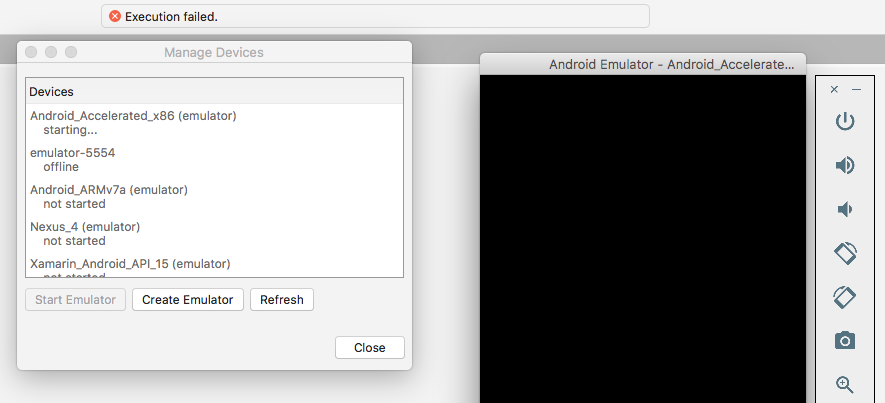

Modern cross platform frameworks are free.

(Oh yes, and here’s a show stopper - Xamarin and Rider cost money.
Android emulator for xamarin on mac execution failed after closing software#
When a company can’t ship a software product with a usable text editor, as a developer you will inevitably ask yourself “when is something better coming along?”įrom simply inputting code to running the compiler requires work arounds, bug fixes or frustration. Anything complicated probably means you’ll be working in Xamarin.Native… or rather, you won’t. Xamarin.Forms is basically suitable for simple apps only. Most Xamarin cross platform development is done using Xamarin Forms.) (Talking of cross-platform, Microsoft themselves even suggest using React Native - a competitor for cross platform development, rather than Xamarin Native. Incidentally, Xamarin.Native is actually cross platform but you have to write your UI code twice - once for each platform. What is Xamarin Forms? Xamarin has two ways of letting developers write cross platform apps (there’s a warning bell for a start.) Forms allows developers to produce a cross platform app using a number of shared GUI components - which you can’t do, using Xamarin.Native. The move to replace Xamarin Forms with MAUI seems to be a move on Microsoft’s part to compete with newer, friendlier and easier to use modern development frameworks. Theoretically, it seemed to have so much going for it, but in the real world, Xamarin has proved to be bug ridden, badly implemented and bloated. Xamarin has been around since 2011, with somewhat of a troubled and confused development history. The move is part of a general evolutionary step across the entire Xamarin environment.


 0 kommentar(er)
0 kommentar(er)
